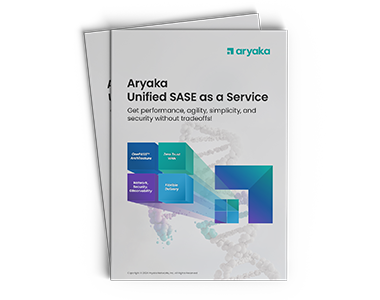The Great Enterprise Cloud Migration – Are you being left behind?
Just how big is the migration away from on-premises applications and to cloud computing? It’s a large enough stampede that it’s happening on its own spontaneously, without much planning and often outside of the control, and even knowledge, of the IT department. According to a report from cloud security startup Skyhigh Networks, the average company uses 897 cloud services, which is greater than 10x more than IT expects.
The number of companies moving enterprise workloads outside traditional datacenters and into private, public, and hybrid clouds is growing by the day. And as cloud adoption accelerates, IT struggles to keep pace.
In our own State of the Enterprise Cloud report, which we will release in coming weeks, our initial data shows that a significant group of early cloud adopters, which already represents more than 15% of our customer base, is accelerating access to cloud applications.
In other words, for fast-moving knowledge-based businesses, the cloud has become such a mission-critical part of the organization that accelerated cloud access is a must-have, rather than a nice-to-have, networking expenditure.
The cloud applications driving the migration
It’s easy to see why accelerated cloud access is becoming a priority. The main enterprise workloads in the cloud or currently migrating to the cloud include email, collaboration tools, CRM, a range of web applications, application testing and development, business analytics, and ERP.
Those applications are the pillars of the modern knowledge-based organization.
Moving these applications to the cloud drives down costs, reduces internal complexity, and allows businesses to shift their attention away from application support and back to their business priorities.
This is why the Great Enterprise Cloud Migration is happening so quickly. The enterprise is moving on to greener grazing grounds.
Yet, those benefits carry with them some serious risks, ones that can be hard to identify when you’re moving at top speed.
The grass may be long and green, but that’s also good cover for predators.
Back in the days when IT was predominantly on-premises, applications and workloads in traditional datacenters were much more manageable. Risk, security, compliance, and network issues were far easier to deal with. Traditional connectivity options and optimization methods sufficed to deal with application performance problems.
Then, realities changed.
And that’s not always a bad thing. Anytime we use the term “herd” in an IT-related context, it’s usually a negative term. But herds can be a good thing, offering protection in great numbers. Herd behavior triggers the flight away from barren lands to richer ones.
The Great Enterprise Cloud Migration offers some of those herd protections. For instance, service providers are able to specialize, and they can react more quickly to threats and then change course more quickly.
Yet, any herd attracts predators. With the Great Cloud Migration, moving workloads to the cloud introduces access, privacy, IP theft, and compliance risks.
Today’s enterprise has a decision to make: run with the herd or risk getting left behind? Lagging behind the herd means you’re an easier target for predators. The fact that cloud service providers can more quickly plug security holes, issue software patches, and roll out new features means that those businesses lagging behind in the cloud migration are much easier targets for attackers.
Declining productivity: an overlooked cloud risk?
When you’re racing ahead at top speed, you can easily miss risks. Something can go wrong that would be obvious if you had more time to analyze it, but makes no sense in real time.
Productivity drops are one such easy-to-miss thing. How many times has this happened to you? You log into your cloud-based application, whether it’s email or a testing tool or a CRM application, and you spend way too much time waiting for the application to load, or the application itself lags, forcing you to work slower than your natural rate?
Application performance is a key determinant of productivity, and moving to the cloud entails serious productivity challenges.
The trouble is that in the old days IT had visibility into the networking issues often responsible for application lag. Now, that visibility is much harder to come by. Your Internet service provider will blame the application provider, which may then blame some other third party, such as your security provider.
The end result is the same: poor application performance triggers a decline in productivity.
As poor application performance impacts productivity and profitability in an adverse fashion, business managers continue to blame the IT guys, who often can do little about it.
Going backwards
For this and other reasons, many companies have scaled back their public cloud plans and shifted their attention to private clouds.
The retreat seems logical, strategic even, but is it?
The unsatisfying answer is: it depends. Have you invested into cloud networking and acceleration tools? Have you invested in application monitoring and network-wide visibility?
If not, you won’t know what’s going on with your cloud-based applications. You’ll be lost in the dust of the stampeding herd unable to navigate based on your own decisions. All you can do is follow and hope for the best.
When it comes to cloud performance, the devil is in the network. The access mechanism for any cloud service is almost always the unreliable public Internet, which means your employees will rightly complain about the loss of LAN-like application performance. It should be obvious that applications originally built for the LAN will perform poorly over the latency-plagued, congested, lossy public Internet. But the obvious can be easy to miss when you’re in a stampede.
Sometimes those new risks have been right under your nose the whole time. You just need to slow down and look for them.
A cloud-based fix for cloud-scale networking problems
At Aryaka, we saw a gap in the market and set out to solve cloud-age networking problems. Cloud applications can work well – when they have the right technologies supporting them.
We have solved the cloud application performance problem by building the world’s only global and private cloud overlay network that is within 1-5ms of most cloud service providers. Our Cloud Acceleration solution provides enterprises with an optimized private network that ensures accelerated access to any and all cloud/SaaS applications.
All that enterprises need to do is use one (or more) Internet link(s) to connect to one of our 25 global points of presence. While the private core allows global enterprises to bypass the unreliable public Internet, Aryaka’s proprietary WAN optimization software stack gives cloud-age enterprises the benefits of TCP optimization, compression, and de-duplication technologies to maximize throughput and performance of their resources in the cloud. Aryaka’s cloud acceleration offering supports all SaaS and cloud services – large players like Microsoft Office 365, Microsoft Azure, Amazon Web Services (AWS), Google Apps and Salesforce – as well as any smaller public, private or hybrid cloud deployments.
Our customers have reported up to 99% bandwidth scaling as well as 40X application acceleration benefits.
You have three choices in the Great Enterprise Cloud Migration: lag behind the herd and become a target for predators, run with the herd and hope for the best, or you could plan out your migration, use the best maps, the fastest networks, and the best acceleration and optimization tools.
We think the choice is an obvious one, but don’t take our word for it . . . try us out for yourself!
- Accelerate CAD/CAM Performance
- Improve Zoom Conferencing Performance
- Calypso Embraces a SaaS-first Strategy
- CallisonRTKL Transforms their WAN
- Kleinfelder Improves Application Performance
- Teradyne Transforms their WAN
- SAP web application performance
- Kleinfelder Improves Application Performance
- Industrial Manufacturing Company Transforms WAN








